Liquid-fueled rocket engines operate by flowing fuel and oxidizer into a combustion chamber at high pressure in order to eject mass out of the rocket nozzle at high velocities. While there exist many ways for these propellants to be mixed (called engine cycles), they all have one major technical hurdle: how does a rocket engine get up to operational pressures? Furthermore, how is this done in the zero-normal force environment of orbit?
Starting a liquid rocket engine is a very complex sequence of managing pressures and temperatures throughout all of the valves and pumps in the engine, where the smallest of errors leads to the engine experiencing a RUD (rapid, unscheduled disassembly).
Starting a Solid Rocket Booster/Motor
By far the simplest rocket engine to start are solid rocket boosters, which are widely used in the industry; most notably, NASA’s Space Launch System and Space Transport System (the space shuttle) have used two massive solid rocket boosters. Since solid propellant is fuel and oxidizer mixed into a solid sludge, to light a solid engine a small amount of energy is needed to start combustion.
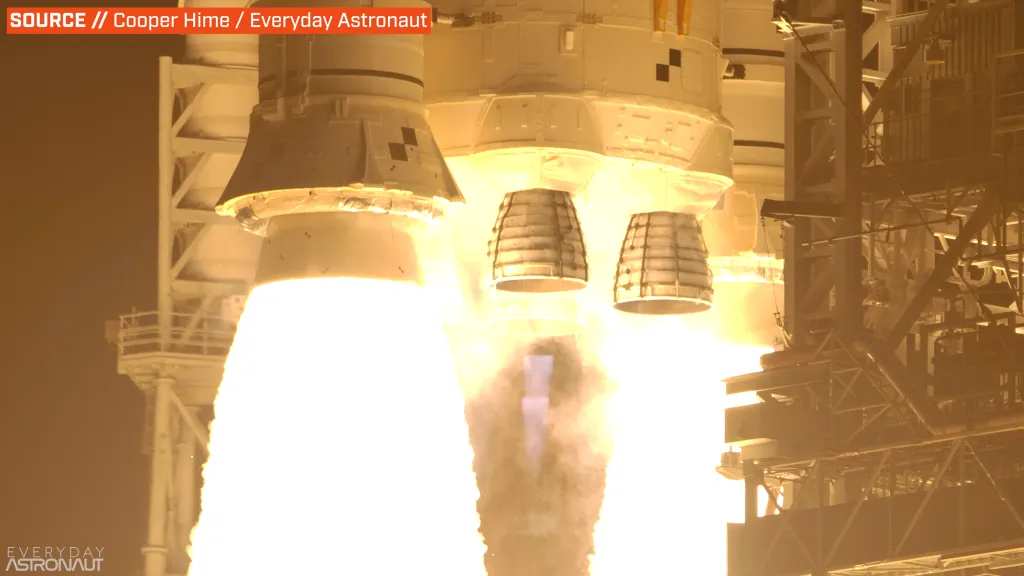
In smaller rocket motors (like hobbyist motors), this is generally done by wires shorting, giving way to heat, and igniting the propellant. However, due to the fact that surface area increases at a slower rate than volume, larger solid rocket motors require more energy to start, and therefore use some form of black powder that ignites from wires, causing a self-sustaining burn.
In the case of NASA’s four and five-segment SRBs (used on the Space Shuttle and SLS, respectively), they use the NASA Standard Detonator (NSD), a device used since the Gemini program for booster separations, frangible bolts, or starting SRBs.
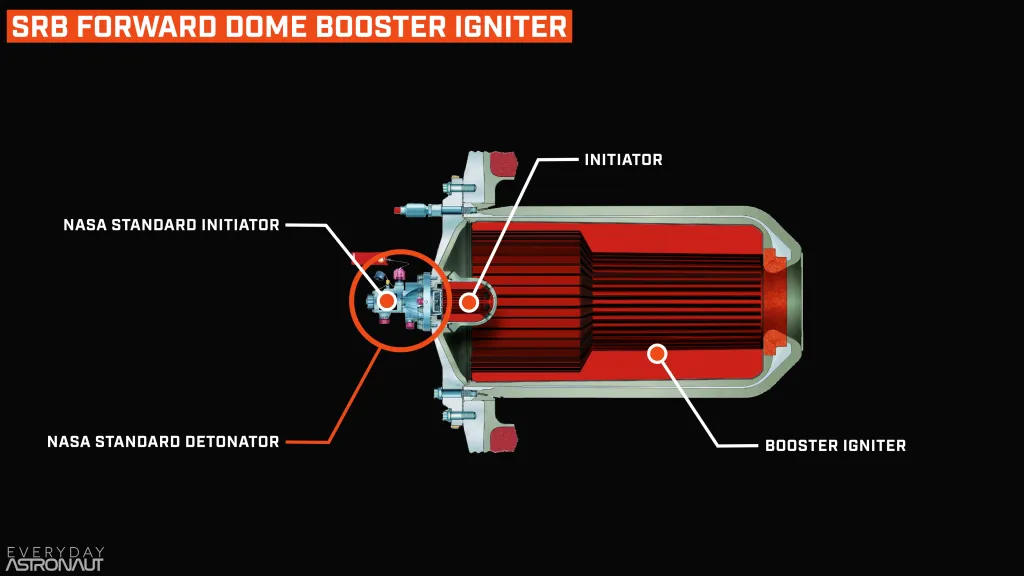
To start these SRBs, a signal is sent to two completely redundant NSDs to ensure both boosters light properly. The NSDs burst a thin seal, which then ignites a pyrotechnic booster charge. That booster charge then ignites propellant in an igniter initiator, which is what fires down the entire length of the solid rocket motor, lighting the entire surface of the core of the booster simultaneously.
This highlights the entire benefit of solids: they are super simple and super reliable. This comes with disadvantages, such as not being able to shut them down and lower performance than liquid rocket engines.
Igniting Liquid Rocket Engines
Preconditioning The Engine
Before a liquid-fueled rocket engine is able to start, the engine must be prepared for the extremely low temperatures it’s about to experience from the liquid propellants. As discussed here, not only do orbital rocket engines run propellant through the walls of the engine to keep the combustion chamber from melting, but the pumps themselves flow upward of thousands of liters per second of cryogenic propellants, which makes the metals, valves, and bearing brittle and prone to failure. This is especially true for engines that run on RP-1 and liquid oxygen (called kerolox) and especially true for liquid hydrogen and oxygen (called hydrolox), or liquid methane and oxygen (called methalox).
The majority of liquid-fueled rockets are one of the aforementioned propellant combinations. Examples of RP-1 and LOx are SpaceX’s Merlin, the Saturn V’s mighty F1 engine, Rocket Lab’s Rutherford, the Atlas V’s RD-180, the Soyuz’s RD-107 and RD-108 engines, Firefly’s Reaver and Lightning engines, and so on.
Slowly the industry has been moving toward the next-generation rocket propellant: methalox. As previously discussed, CH4 is a good middle ground between keralox and hydrolox, generating a moderate amount of thrust at a moderate specific impulse. The majority of upcoming rockets engines use methalox, including SpaceX’s Raptor, Blue Origins BE-4 (which will fly both on ULA’s Vulcan rocket and Blue Origin’s New Glenn), Relativity’s Aeon engine, Zhuque-2’s TQ-12, and the Archimedes engine on Rocket Lab’s Neutron.
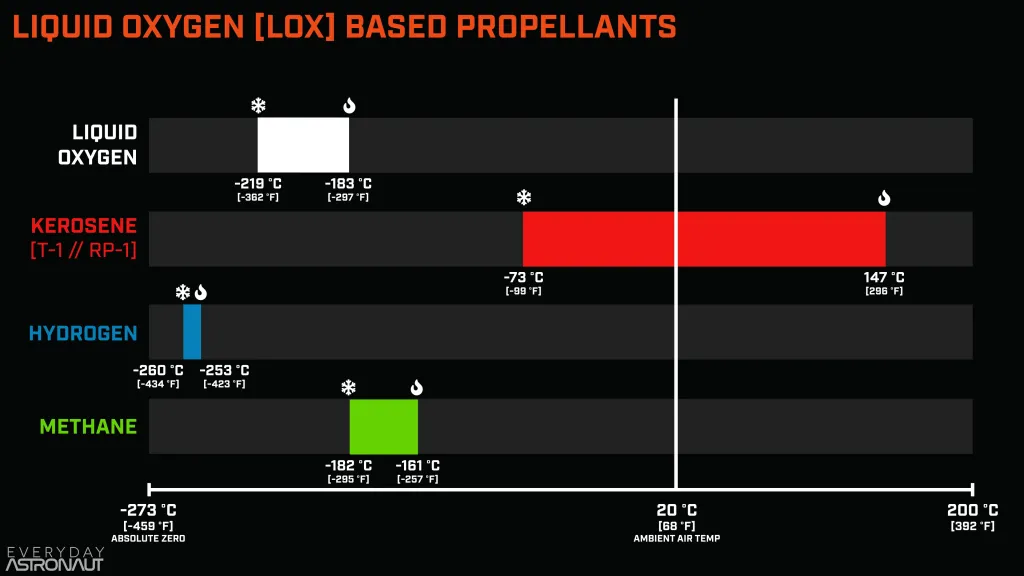
Taking temperatures to extremely low depths, many rocket engines use hydrolox. These engines are extraordinarily hard to start due to hydrogen’s boiling point being -252°C and its very low density. Some of these engines include the RS-25 on the Space Shuttle and SLS, the RL-10 variants that fly on Atlas, Delta, SLS, and soon Vulcan, the J-2 on the Saturn V, the RD-0120s on Energia, or the RS-68A on the Delta. Additionally, Stoke Space’s upcoming engine will also run on hydrolox.
However, before an engine can be conditioned by flowing propellants through the engine, it must be purged. This process generally involves blasting gaseous nitrogen throughout the engine, purging the lines eliminating air pockets and moisture. This is important as any water vapor in the lines before cryogens are introduced will freeze, causing damage to the engine, potentially clogging orifices and damaging sealing surfaces.

In the case of a hydrogen engine, this problem is amplified by the fact that liquid hydrogen is cold enough to freeze nitrogen, so any remaining nitrogen in the system can cause these problems. To make this even worse, these kinds of failures are very hard to investigate, since the solid melts way before any human is able to visit the scene.
Chill Down
Chill down starts at vastly different times depending on the engine. For instance, the nine Merlin engines on the Falcon 9 begin chill-down at T-7 minutes, whereas the RS-25 on SLS starts chilling down hours before launch. This event is usually paired with a callout on the nets with “engine cool-down” or “engine chill-down.”
Closer to T0, the rocket will transition from the inert gas and will begin to flow some of the propellants through the system at a low flow rate, where it will start to thermal condition the engine to get it to the cryogenic temperatures. This process is surprisingly easy, due to the rocket’s tanks storing propellant at relatively high pressure, usually three-to-six bars. Because of this, some valves can just be opened, and the pressure from the tanks will ensure propellant flows from the tanks through the engine.
Depending on the engine, the rocket, and the ground systems, the propellant that has gone through the engine may be vented into the air. This is especially true with liquid oxygen, which poses no risk when being vented into the atmosphere. However, for CH4 and H2, it will generally be either cooled down again into a liquid or burned in a flare stack, to reduce their impacts on the atmosphere.
Not only is the engine chilled to protect itself from the cold propellant, it’s also done to protect the propellant from the warm engine. If the propellant boils before reaching the impellers in the pumps, it can cause cavitation (small bubbles in the liquid). These bubbles can chip away material from the pumps and damage the blades. SpaceX CEO and CTO Elon Musk talked about this in Everyday Astronaut’s tour of Starbase:
But, not only can these bubbles damage the pumps by chipping at them, but they can also cause the pumps to overspeed, meaning they deliver the incorrect amount of propellant to the combustion chamber. This can cause the engine to burn at stoichiometric conditions, which releases the most heat to the engine, damaging or even destroying it.
This chill-down process is absolutely vital. In fact, SLS’ launch attempt in August of 2022 was scrubbed for this reason; engine 3’s temperature sensor wasn’t showing that the engine had chilled down to the required temperatures, scrubbing the launch for the day. It later turned out that this data was due to a faulty sensor and not the engine not being at operational temperatures.
Exceptions
This all said, there are exceptions to the chill-down process: hypergolics. Hypergolic propellants are those that combust upon contact with each other. The hypergolics that are used in rocketry have a high boiling point, meaning that they can be kept at room temperature. Because of this, the engines do not need to be chilled down.
Obviously, this has its advantages for many intercontinental ballistic missiles and their derived rockets, which generally run on hydrazine. The fuel can be either unsymmetrical dimethylhydrazine, hydrazine, or monomethylhydrazine with the oxidizer being nitrogen tetroxide.
The US’ use of hypergolic-based rockets has been limited. The LR87 on Titan II and the AJ-10 on Delta II’s upper stage were hypergolic. That said, hyperbolic rockets were very popular in the Soviet Union, which can be seen in this article. Additionally, many of China’s launch vehicles run on hypergolics, but they are slowly shifting away from this.
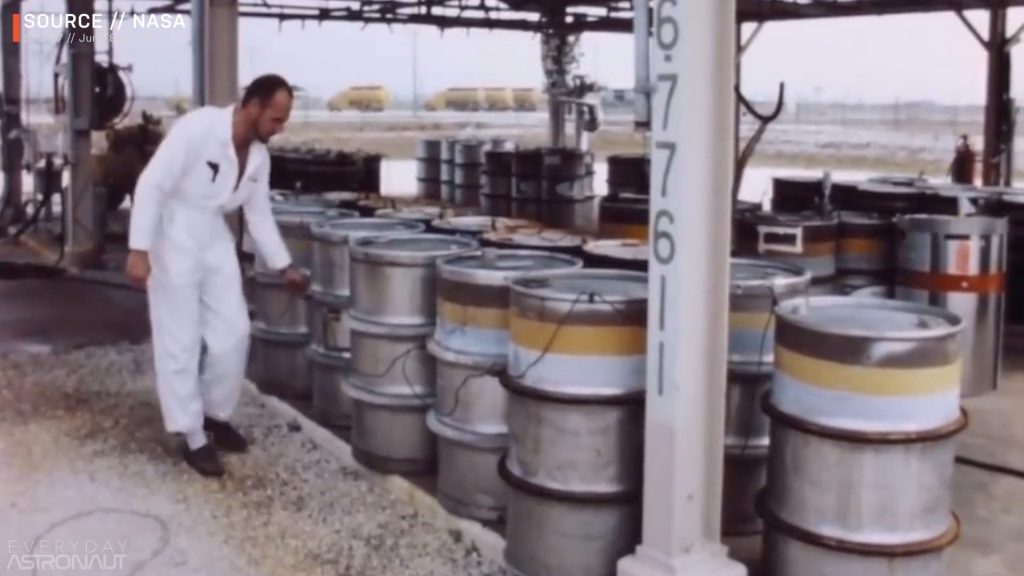
Spin Up
After the engine has been pre-conditioned for starting, the next goal is to spin up the pumps. To do this, engineers must take into account one of the most fundamental laws of the universe: pressure flows from high pressure to low pressure. In order to ensure that a flame is not sent backwards through the system, which would lead to a catastrophic failure, the pressure upstream an engine must be very high. In fact, for some engines like SpaceX’s Raptor, pressures upstream can approach 1,000 bar!
The simplest engine cycle to spin up is a pressure-fed engine. Because the propellant is already stored at high pressure, simply opening valves will allow propellants to flow into the combustion chamber at the necessary operating pressure.
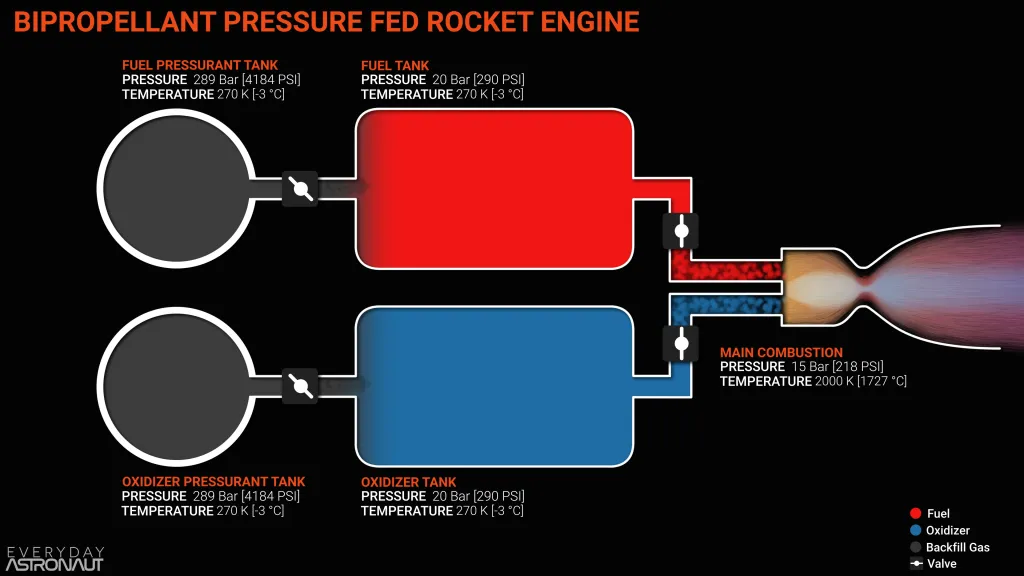
This said, pressure-fed engines are not enough to get objects into orbit from the Earth’s surface. For this reason, high-power high-pressure engines are needed that have turbopumps. In most engines, the turbine has hundreds of thousands of horsepower from just one turbine. That turbine is of course spun by a gas generator or preburner, which is fed by the pumps. This creates a hard dynamic that the turbine must be spinning to get move propellants to the preburner/gas generator, but the preburner/gas generator must be burning to spin the turbine.
The simplest way of bypassing this, which is done by Rocket Lab’s Rutherford engine, is to use an electric motor to drive the turbine. Then, this is not a problem. But this is not feasible for larger engines, such as the RS-25, which needs 100,000 horsepower to spin its turbine when at full throttle.
What’s more, is the RS-25’s fuel preburner delivers 200 horsepower per kilogram, highlighting why electric motors would not be practical.
Spinning up a preburner/gas generator is generally done by using high-pressure gas to get the pumps spinning. This can either be supplied by an onboard system, like helium stored in COPVs, or by ground service equipment. Spinning up engines with GSE is advantageous since it removes mass and complexity from the rocket.
In either case, high-pressure helium or nitrogen is pumped into the gas generator/ preburner to get the turbine spinning at operational speeds. For a short period of time, the engine’s pumps are powered by what is basically a cold gas thruster, which is very inefficient. Alternatively, some engines use a little solid or hypergolic engine that acts as a gas generator for a small amount of time.

However, due to the low specific impulse of these systems, you don’t want to run the engine off this for any longer than necessary, so it’s only done until the engine can self-sustain combustion. This means that for engines that require multiple starts (such as engines on upper stages that may have to burn several times to reach a desired orbit or for a propulsive landing), the rocket must carry enough helium to spin up the engines.
Bootstrapping
However, there is another way of starting a rocket engine that doesn’t require a separate source to get the pumps up to speed. This process, called bootstrapping (or tank head / dead head starting) is where the engine carefully lights up using only tank pressure and energy stored in the thermal difference between the propellant and the engine. To do this, the preburner (powering the turbine) will begin to spin up due to hydrogen flowing through the preburner and boiling off. This raises the pressure, starting to spin the turbine. Then a very delicate dance takes place, as some oxygen is let in and the preburner lights. At first, the combustion is very weak, but as the pressure in the preburner rises, the pumps spin faster, providing more fuel to the preburners, causing the pressure to rise, spinning the pumps faster. This is done until the engine is at operational pressure.
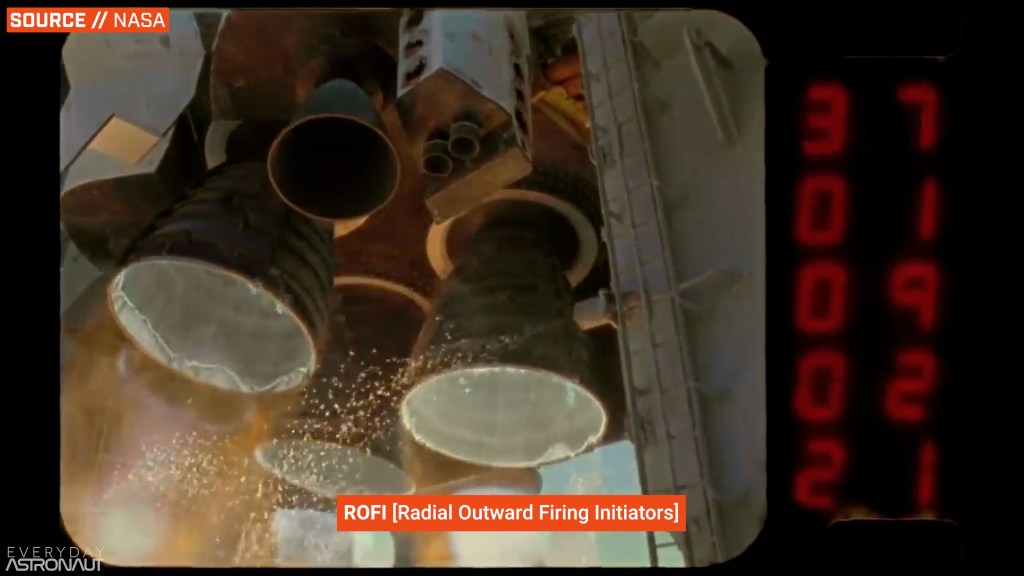
This process is used on the RS-25 (both on the Space Shuttle and on SLS), wherein the RS-25, the high-pressure fuel turbopump must reach 4,600 RPM within 1.25 seconds for the engine to have enough propellant flow for ignition of the main combustion chamber (MCC). Additionally, Relativity has successfully bootstrapped the first stage of their Terran 1 vehicle, and Firefly’s ex-CEO Tom Markusic mentioned in an interview with Everyday Astronaut that firefly was looking into trying to bootstrap Alpha’s second stage.
Deadhead starting is an extremely complex process due to the precise control needed. But this is made even more complex given that when an engine is starting up it is in a transient: the time in between being off and firing at full throttle.
Transients
Transients can best be summed up as the “in-between moments.” In the case of rocket engines, the time between a stationary engine and an engine running at full power. Additionally, any time that the engine changes throttle settings it is in a transient. But, once the engine is in a steady state it is relatively easy to keep running.
These transients make starting an engine very difficult due to the chicken-and-egg scenario previously described. Using bootstrapping the RS-25 as an example: the liquid that flash boils from hitting the engine’s preburner expands as it becomes a gas. This expansion is what starts spinning the turbine. However, this pressure also exerts a back pressure on the rest of the system, slowing down the flow of propellant. Then, as the boil-off decreases, the flow will increase again, where it will boil off, causing the same thing again. In the case of the RS-25, this happened twice every second.
Making things even worse, there are often delays between action and reaction. If these pressure waves are too extreme, the pressure gradient could flow backward, stalling out the startup sequence or blowing up the engine.
Additionally, any time a valve opens the pressure is changed, affecting the flow. The entire engine start-up is full of these feedback loops, making the fact that rocket engines can be started a remarkable feat of engineering.
Ignition Process
Ignition On The Ground
Now that the engine is conditioned for launch, the propellants start flowing to the engine. However, this makes up only two-thirds of the ignition triangle, which consists of fuel, an oxidizing agent, and an ignition source (usually in the form of heat). But, to make things even harder, any slight error in the ignition process can lead to a “hard start,” which is when the propellants combust at the wrong ratio, at the wrong time, or in the wrong place. The worst hard starts can overpressure the engine, causing an energetic detonation, destroying the engine and potentially the vehicle.
Before an engine can be ignited the propellants must be mixed in the combustion chamber. This is done through specially designed injectors, which Everyday Astronaut will do a video/article on in the future. If the propellants are not mixed evenly, the engine can not have stable combustion, causing the engine to explode.
The easiest engines to ignite are hypergolic because, by definition, they ignite on contact. However, this obviously cannot be done for any liquid oxygen engine.
The first and simplest form of engine ignition is what the Soviet Union did with the R7 and what Russia still does with the Soyuz. They put large wooden braces with pyrotechnics on top inside each combustion chamber. Then when these are ignited, the engine ignites. While not elegant but practical, it has one major downside: this cannot be done in space.

A large number of engines use an electrical current that sparks over a gap to ignite the engine. This, however, requires a large source of power, which must either be supplied by large, massive batteries or by GSE. On a similar note, spark igniters can be used, which just heat up a coil until it’s hot enough to ignite the propellants. This is similar to a glow plug in a diesel engine.

Another ignition technique that hasn’t been used on any orbital rocket (to our knowledge) is using a light amplification of stimulated emission of radiation (laser) to ignite propellants. This has the potential to be more efficient than the aforementioned ignition techniques but does have added complexity.
But, there is another option: use pyrophoric fluids (most commonly TEA-TEB, a fluid that is hypergolic with oxygen). This has the advantage that they have a low mass and are very reliable. For example, the Falcon 9 uses TEA-TEB to start its engines. This can be seen by the bright green flash when Falcon 9 ignites an engine. TEA-TEB makes igniting an engine easy since you inject TEA-TEB into the engine, then once oxygen begins flowing it ignites, starting the engine.
On Falcon 9, the TEA-TEB used for igniting the engines at launch is stored by the GSE. The Merlin Vacuum engine and the three landing engines (E1, E5, and E9) have TEA-TEB canisters, which store the fluid for the ignition of engines in flight.
Ignition with TEA-TEB has some downsides. First of all, it is consumable. This means that it must be reloaded between every flight. Second, it is quite expensive, costing roughly the same as the cost of RP-1 for the Falcon 9.
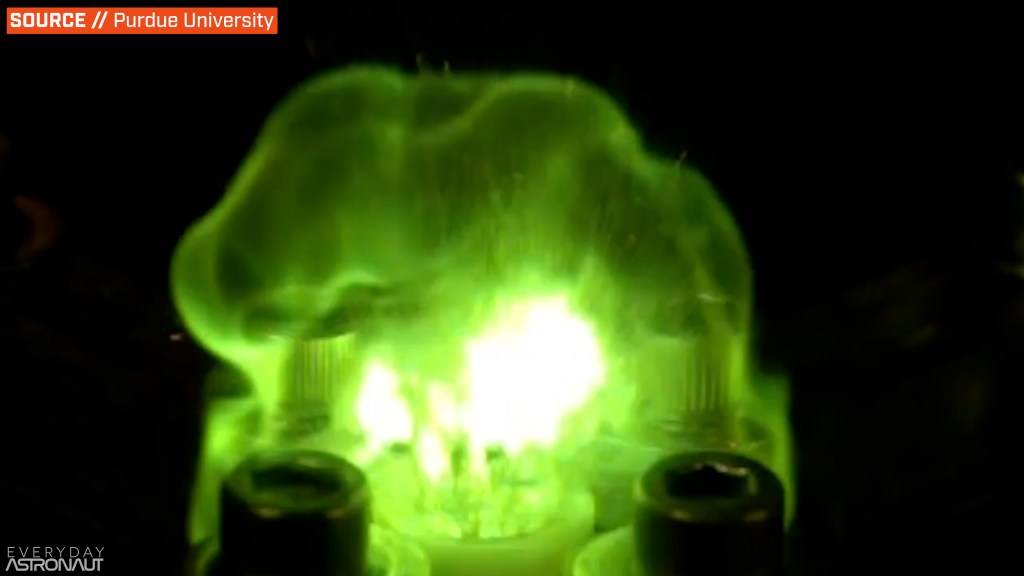
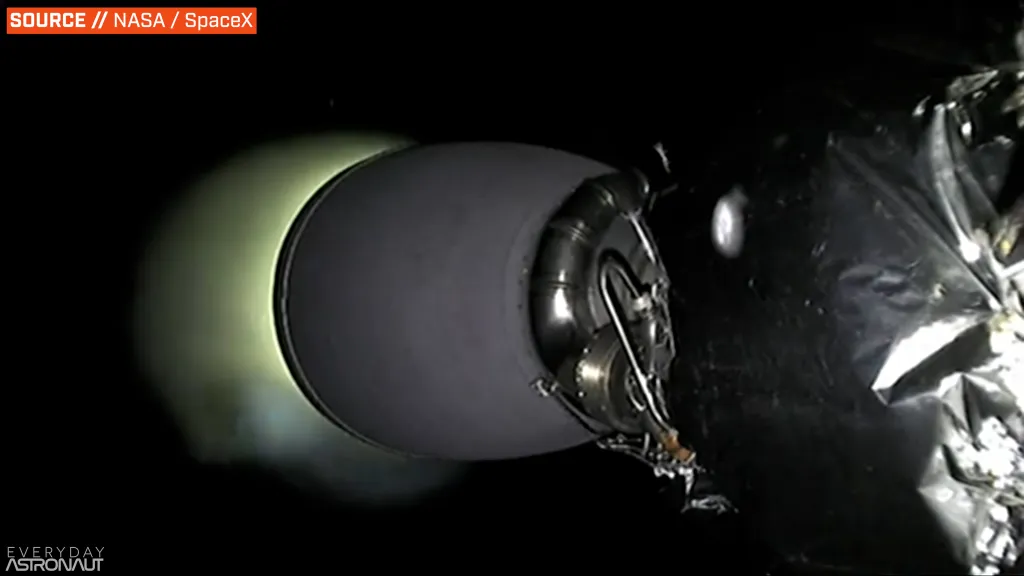

SpaceX’s new Raptor engine has used a hybrid approach using a torch igniter (also called an augmented spark igniter), which is similar to a lighter that would be used to light a candle. It uses a smaller spark igniter then a supply of methalox to allow the torch to burn. This is itself almost like a mini rocket engine that is lit with a spark igniter. That torch remains ignited through the startup sequence.
This process is used to ignite both of Raptor’s pre-burners but not the MCC. The MCC, in fact, has no igniters. Although in Everyday Astronaut’s interview with Elon Musk, he was tight-lipped about how they ignite the MCC, it is assumed that SpaceX is getting away with homogeneous combustion–spontaneous combustion when methane and oxygen come in contact with one another. The Raptor is able to get away with this because it’s FFSC–this means that both propellants reach the MCC as hot gasses.
Ignition In Space
Starting an engine in space has two major additional challenges. First of all, there is no ground support equipment. This means that the mass of all of the ignition system must be on the vehicle. Second, and perhaps more importantly, is that the vehicle is not in an inertial reference frame and is subject to the Earth’s gravitational pull. This means that liquid propellant sits at the bottom of the tanks with only the top of each tank having gasses.
However, when a vehicle is in space (and not firing an engine) it is in an inertial reference frame (and therefore has zero normal force). Because of this, the propellants are just floating around in the tank–not necessarily by the engine inlets. So, to start a rocket engine in space it must first be assured that the propellants is at the bottom of the tanks. To do this, most commonly ullage thrusters are used. This is when either a small solid rocket motor or cold gas thrusters is used to settle the propellants, as solid rocket motors and cold gas thrust can be fired in an inertial reference frame.
For example, the Saturn 1B and Saturn V used ullage thrusters to not only separate the stages but also to settle the propellants. This sequence led to this very iconic imagery of S-IVB ignition:
Using cold gas thrusters is the most common solution as they are easily restartable–which is necessary if a stage is doing more than one burn to reach its desired orbit. In fact, even Falcon 9’s first stage has two propellant settling thrusters, which are used before boost back and reentry burns; they are not used before the landing burn as the stage is slowing down rapidly already from the atmosphere.
Many spacecraft don’t need ullage thrusters due to their use of hypergolics. For example, SpaceX’s Dragon spacecraft uses hyperbolic propellants stored at a high pressure. This way, Dragon can rapidly fire its Draco thrusters for very precise control of the vehicle. The liquid hypergolics are stored in propellant management devices, which are spherical tanks that have a bladder. While not used on Dragon, some cylindrical tanks can use a piston, which pushes propellant forward as it is used.
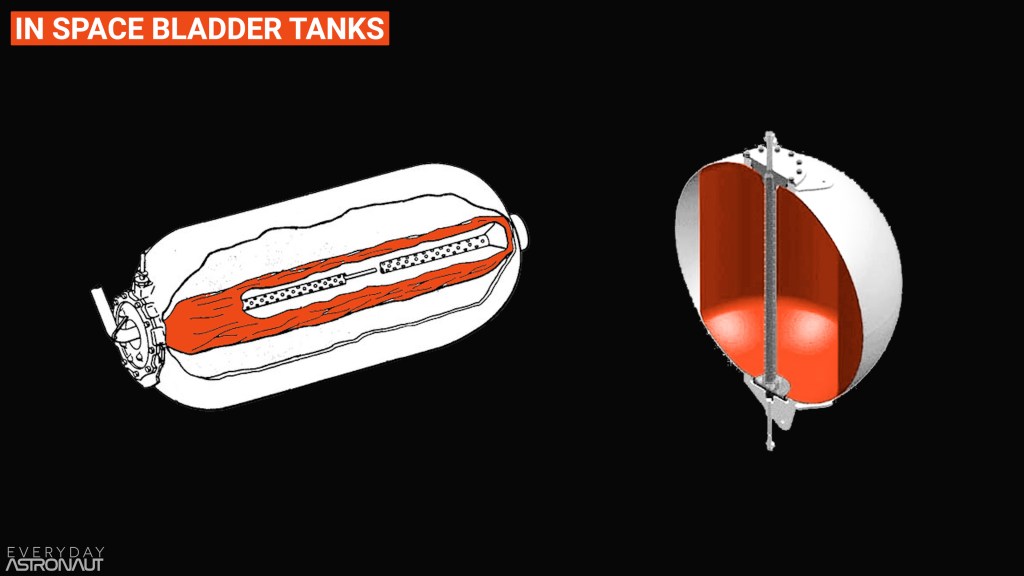

However, there is still one final way that an engine can be ignited in space without any of these methods: hot firing. Used by the Soyuz, Proton, and some Titan rockets, hot staging is when engines on the upper stage are ignited while the stage below is still firing.
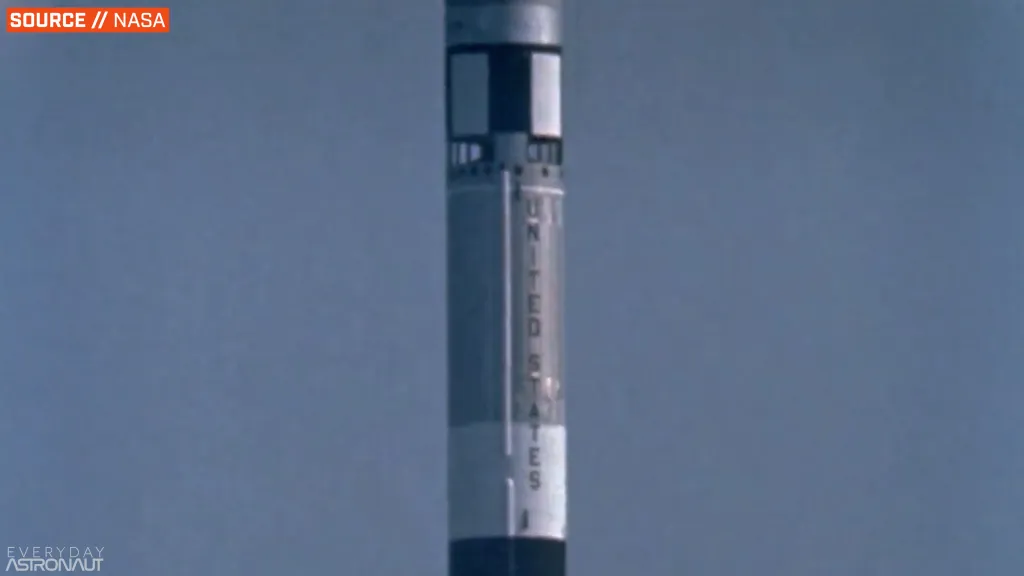
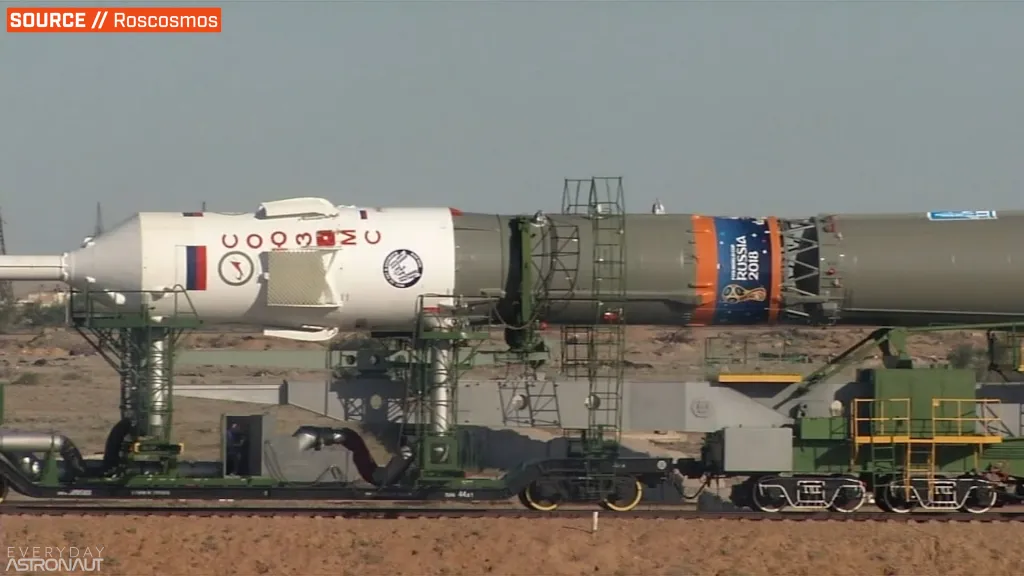
Ignition Of The RS-25
To understand everything talked about above, the ignition sequence of the Space Shuttle’s RS-25 engine will be analyzed. This section is partially based on Robert E. Bigg’s Space Shuttle Main Engine The First Ten Years. For this section, knowledge of the RS-25’s fuel-rich closed-cycle engine cycle is needed.
The RS-25 has two preburners. Since it’s fuel rich, both preburners are fuel rich, meaning all of the fuel flows through the preburners with one powering the oxygen pumps and the other powering the fuel pumps. Additionally, there is a small boost pump on the oxygen side that feeds the preburners the higher-pressure liquid oxygen they need to operate.
The engine has pre-valves that connect the tanks to the engines and main fuel valve, which feeds the preburners and the regen cooling channels. The regen system has a separate valve called the chamber coolant valve, which can be throttled to redirect fuel between the MCC and the regen systems.
There are three oxygen valves, one that feeds each of the three combustion chambers (the MCC and the preburners). Finally, there are some recirculation pipes that feed boiling off gaseous propellant either back into the tank or vent it into the atmosphere.
Completing the ignition triangle, the RS-25 has augmented spare igniters (ASIs). There are three sets of these, one in each preburner and one in the MCC. The ASIs have their own fuel and oxygen supply lines and are the first to receive propellant in the system.
While there are obviously many other tubes, pipes, and sensors around the engine, to understand the core concepts of igniting the engine, this simplification is sufficient.
Preconditioning
As noted above, the first step is to purge and thermally condition the engine. The RS-25 goes into the “Start Preparation Phase”; during this phase, the oxygen side of the engine is purged of moisture using nitrogen and the fuel side is purged with helium. Now that the engine is free of moisture, the engine can be thermally conditioned for launch. To do this, the main fuel pre-valves are opened allowing liquid hydrogen to flow through the fuel pumps and into the main fuel valve. Some of this propellant is recirculated so that it either dumps some of the hydrogen overboard or pumps it back into the fuel inlet.
Oxygen fills the oxygen side of the engine by opening the oxygen pre-valve, allowing the cryogenic propellant to flow through the oxygen pumps and the three valves. These valves need to be very precisely controlled during start-up as the main oxygen valve that feeds the MCC, the fuel preburner, and the oxygen preburner. The oxygen is also recirculated and has a bleed valve at the fuel preburner oxygen valve, allowing for some oxygen to be dumped overboard. The propellants are held inside the engine for over an hour to fully condition the engine for startup.
Throughout all of this, the main engine computer is monitoring the pressures and temperatures 50 times per second. Four minutes before ignition, there is a final engine purge with helium downstream of the main fuel valve. Assuming all data looks good to the engine controller, the computer will enter an “engine ready” status.
Ignition Sequence
Three seconds before engine start, the bleed valves for the oxygen and hydrogen lines are closed and the engine waits for the command to start. Once this command is received, the first thing that happens is the main fuel valve is fully opened. This valve takes approximately 2/3rds of a second to fully open.

At this point, despite the engine being quite cold by an absolute standard, downstream is warm from the point of view of liquid hydrogen and oxygen. This means that as the liquid hydrogen flows into the engine downstream, it will almost immediately boil off into gaseous hydrogen. This energy from the latent heat of the engine is enough to begin spinning the turbine, which is essentially being to spin up as an expander cycle engine does. As noted earlier, this is known as bootstrapping or deadhead starting.
This leads to thermodynamic instability. As the propellant flash boils, it will create uncontrollable, but predictable, oscillations. This problem is very difficult to solve, as everything has a delayed reaction, so the engine controller needs to know when the pressure oscillations occur in the startup process.
These oscillations occur for about 1.5 seconds until the MCC reaches what is known as prime. Prime, in this example, is when the mass flow rate is stable on each side of the injector. This occurs in all three combustion chambers when there is stable flow between the pumps and the chambers.
Going back a little bit, at the same time as the main fuel valves open, the ASIs are powered up and are ready to ignite any propellant they come in contact with.
Now that fuel is introduced to the system and beginning to get the turbines spinning, oxygen must be introduced. The first thing to receive oxygen is the igniter inside the fuel preburner. The system starts to flow liquid oxygen through the preburner right as the LOx valve starts to open; at just 5% opening of the fuel preburner oxygen valve, LOx is directed straight into the igniter.
The timing of when the valve starts to open and when oxygen starts to flow into the igniter coincides perfectly with the first dip in pressure during those pressure oscillations. This ensures that the mixture ratio of oxygen and hydrogen is correct and that the first bit of combustion will be controlled.
From here the fuel preburner oxygen valve has to “ride the waves” of these oscillations to follow the highs and lows of the system–this requires a lot of small movements of the valve. And once again, they cannot react to the pressure oscillations due to the delayed reaction between valve openings and the events happening downstream, so each oscillation must be precisely documented. In fact, for each valve movement during this period, one can safely assume that there was an engine that blew up and changes had to be made.
By this point, the pumps are spinning quickly and the system is closer to reaching equilibrium in all three chambers (hitting prime). 1.25 seconds after engine ignition, the computer will conduct a speed check of the fuel pump turbine. During testing, it was found that the pump needed to be above 4,600 RPM in order to move forward into fuel preburner and MCC ignition, otherwise, there wouldn’t be enough hydrogen pressure to overcome the MCC’s pressure.
At 1.4 seconds after ignition sequence start, the fuel preburner hits prime right when there is a large dip in pressure followed by a rapid increase in pressure. This causes the fuel turbine to spin up very quickly; in fact, there is virtually no back pressure after the turbine from MCC yet, since it hasn’t hit prime at this point, so the turbine speeds up ridiculously fast. If left unattended, the turbine would actually overspeed, causing a catastrophic failure. So making sure that the MCC hits prime at exactly the right moment is important to provide the necessary backpressure.
By spinning up the fuel turbine and pumps first, it is ensured that the whole system has higher fuel pressure and ratios, ensuring the engine has a cool fuel-rich start. While the engine can’t be so fuel rich that it cannot be lit, it’s better to stay too fuel-rich rather than approach stoichiometric conditions.
Heading back to 0.2 seconds after engine start, the MCC’s oxygen valve will start to open to flow oxygen into the MCC igniter. The MCC valve is slowly opened, to just under 60% open. The delay and slow rate of opening ensure the MCC’s igniter has oxygen 0.85 seconds after engine start. This makes sure the engine is fuel rich.
MCC hits prime at 1.5 seconds, which causes the pressure in the MCC to rise rapidly, preventing the overspeed of the fuel turbine due to the increased backpressure and therefore resistance on the turbine.
Stepping back a little bit more, the oxygen preburner valve’s initial opening is at 0.12 seconds, but its designed in a way that the initial opening is all it takes to power the oxygen preburner igniter. This allows for the oxygen preburner igniter to be lit at 0.95 seconds, just one-tenth of a second after the MCC’s igniter. The oxygen preburner valve is designed to not really begin to flow oxygen through the oxygen preburner until it’s 46% open.
Once again, it is very important that the flow of oxygen is generally conservative. It is a careful balance between giving the system enough oxygen to begin combustion and provide the power necessary for the engine to run, but not giving too much oxygen where the engine would start to run lean and experience damaging temperatures. On a similar note, the oxygen preburner valve helps control the power of the oxygen preburner, which controls the speed of the oxygen pump’s turbine, which is what controls the overall pressure in the oxygen system. So that one valve actually has a huge effect on the entire engine.
The oxygen preburner is the last of the three chambers to hit prime at 1.6 seconds. At 1.7 seconds after engine start, the main engine computer verifies that all three combustion chambers had proper ignition and are operating normally. At the begining of this phase, where the engine has all three combustion chambers lit and primed, the MCC is at roughly 25% of its rated power level but is far from stable.
In order to increase stability and increase the safety margin of the chamber coolant valve, which is fully open until this point, it is throttled down to 70%. This forces more fuel into the MCC for 0.4 seconds, which helps absorb variations in the pressures and temperatures.
At 2.4 seconds into the sequence, the computer goes into closed loop control, meaning that throughout the rest of the ramp up to rated power level, the main engine computer is actually reacting to the pressure and temperatures and making adjustments accordingly to follow the path to ramp up. Most of this is done by controlling the oxygen preburner oxygen valve since as noted above this has large effects on the engine.
For the next 1.4 seconds, the fuel preburner oxygen valve is simply following what the oxygen preburner valve does to proportionally supply the fuel preburner with the right amount of oxygen. At 3.8 seconds, the system goes into fully closed loop mixture control, meaning that only the fuel preburner and oxygen valve are used to ramp up to the correct mixture ratio in the MCC of 6:1, which should occur at five seconds, and also means that the engine has fully reached operating power levels.
All of this leads to the gorgeous shock diamonds that the RS-25 is known for having. Looking back through this, it is clear how difficult of a problem this was to solve; in fact, just to get through the first two seconds of startup there were 19 tests across 23 weeks with eight turbo pump replacements. It took another 18 tests across 12 weeks and five more turbopump replacements to get up to full power.
Throttling And Shutdown
Start-up isn’t the only dynamic situation a rocket engine faces. Once an engine is running in a steady state, the engine should be mostly stable. But what happens when the engine needs to throttle down? This changes a lot based on the engine, but generally, this is done by reducing the flow to the preburner or gas generator. This is usually done with one of the control valves, and often by reducing the flow of oxygen to maintain a fuel-rich state.
The same thing is true for shutting an engine down. It’s another dynamic event, and the general rule is to never let the engine get close to stoichiometric conditions. Since engines usually run fuel-rich, this means first reducing the flow of oxygen and then later reducing the flow of fuel.
Generally, engines are shut down as quickly as possible while avoiding high loads. On the RS-25, the initial oxygen preburner oxygen valve motion is limited to 45% per second. The main oxygen valve also is closed at a particular rate, mostly to ensure there was sufficient backpressure on the turbines so that they wouldn’t accidentally overspeed during the shutdown process.
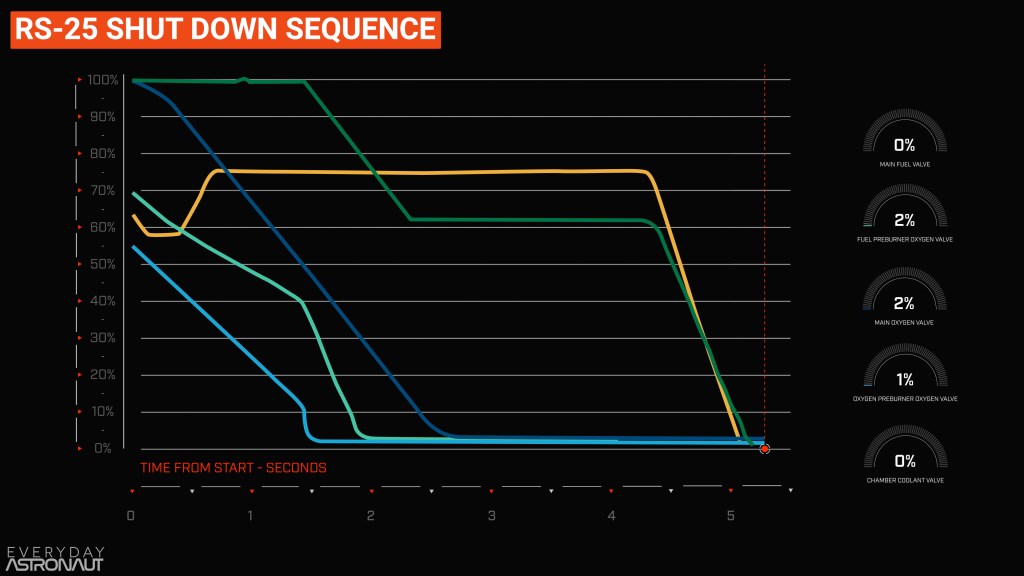
Raptor
Overall, it is very impressive how many considerations there are to every single input and condition, especially given the fact that many of these lessons can only be learned the hard way. It is this mindset that drives SpaceX to test its Raptor engine so quickly. SpaceX believes that by just getting them on the stand, and not treating them as a one-off golden pony, it can learn more quickly. There are countless lessons they have learned that have shaped safe operations during start-up, throttling, and shutdown. On top of this, due to Raptor being full-flow staged combustion (having a fuel-rich and oxygen-rich preburner) the two preburners are even more intertwined. Changing the speed of one has a very direct impact on the other.
The initial spin-up of Raptor is done using either helium or nitrogen, but then there are torch igniters in the preburners and likely some kind of homogeneous ignition in the MCC. From there, there is a very delicate dance to get them up to operational pressure. This is why SpaceX is firing raptors roughly five times a day to get all the kinks out.
Summary
Starting a rocket engine is very hard. While some are easier than others, it is easy to see why companies can easily come up with engine concepts but very few get into production and operation. When a company shares that it has successfully started up a new engine, it is very applause worthy and it means that it has likely made it through one of the biggest hurdles of development.
Starting a rocket engine can be as simple as sending an electrical signal to an igniter that will begin the ignition of a solid rocket motor, or as complicated as having valves that must adjust their position by 2 degrees within a few milliseconds to avoid an engine RUD. It’s genuinely a miracle that people have figured out how to make rocket engines so reliable.




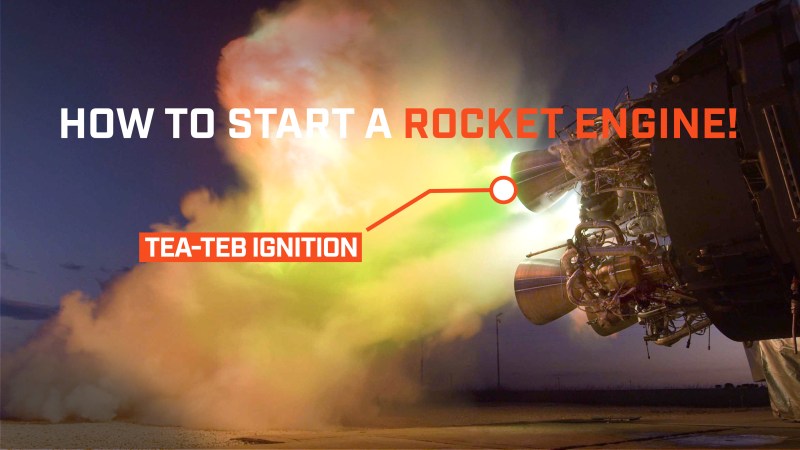
Nice article. I think you meant glow plug igniter instead of spark igniter when you talked about “heating a coil”. It looks like Relativity Space is using a glow plug igniter on Terran 1 ( probably for parts count reasons). It is going to be interesting to see what kind of ignition system future lunar landers use if they have non hypergolic propellants and don’t use TEA TEB.
Very surprised that “Ignition with TEA-TEB … it is quite expensive, costing roughly the same as the cost of RP-1 for the Falcon 9.”
How much per litre of TEA-TEB ? and how many litres does a Falcon 9 booster need (9 engine starts to launch, and 7 or 4 more starts to recover) ?
Excellent article, you maintain a really good mix of accessible/technical in the writing too. I have ADHD and don’t do well with video so finding these articles is awesome. Thanks for all your work!